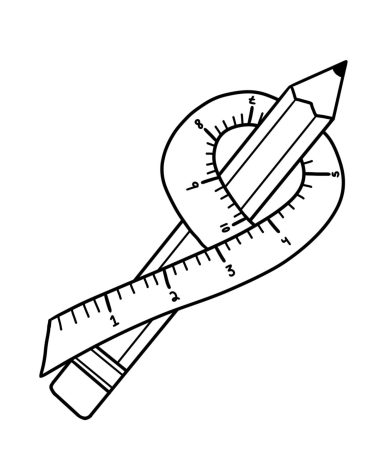School is not one size fits all
May 11, 2023
The unit quiz lands on your desk. Suddenly your hands are shaking, your heart is pounding, and your mind is blank. Suddenly, it doesn’t matter how long you stayed up last night memorizing this unit’s content or how hard you tried to stay focused during class. You stare at the first question and think, “I’m going to fail.”
For many students with anxiety and learning disabilities, this is a reality. Sometimes, memorizing content and keeping up with coursework isn’t enough. Students can put the same amount of effort into academics as their peers, and everyone may still score differently on the same test. The way that high school is structured makes it difficult for students with learning disabilities and anxiety disorders to feel safe and confident at school, therefore impairing their academic performance. Thus, Redwood should be more aware of how we approach education to make sure students with learning disabilities, as well as undiagnosed disabilities, get the same quality education as their peers.
This group includes more students than you think. The American Test Anxieties Association estimates that around 16 to 20 percent of students suffer from severe test anxiety that affects their test performance. Despite this already alarming statistic, it is also estimated that 31.9 percent of teenagers suffer from some degree of anxiety, and 8.3 percent of those teenagers experience impairment because of their disorder. It should also be noted that rates of anxiety are higher for teenage girls specifically — at a shocking 38 percent. Test anxiety manifests as physical and mental symptoms in students. When given a test, students with this disability may feel physical symptoms such as sweating, hyperventilating, stomach pain, and shakiness. Students may also feel extremely distressed, have recurring negative thoughts of helplessness and fear, experience the inability to focus, and much more.
Along with test anxiety, some disabilities impair students’ abilities to focus during class and keep up with classwork. According to The Yale Center for Dyslexia and Creativity, dyslexia affects 20 percent of the population. Dyslexia is subject to many myths that doubt the abilities of the student because of their poor reading and writing skills. In reality, students with dyslexia are capable of high comprehension in conceptual subjects.
Another learning disability that impairs students’ performance is attention deficit hyperactivity disorder (ADHD), which is one of the most common learning disabilities in teenagers. 9.4 percent of children and teenagers in the U.S. have been diagnosed with ADHD. Students with ADHD often find it difficult to focus during class and during tests.

While Redwood does offer academic accommodations to students with such disabilities, these only apply for students who qualify through 504 Plans and IEPs. The process of receiving accommodations is unnecessarily difficult. Even with accommodations available at Redwood, students without learning disabilities are able to more easily succeed in academics, because most teaching styles used are best suited to their needs. Reading textbook pages for homework, watching lengthy documentaries during class, listening to hours of lectures a day — these are all methods that students with learning disabilities struggle with, yet these are the methods that are utilized the most.
So, what should Redwood do to better suit the learning needs of their students?
The immediate response to students’ struggles should be to alter the education system as a whole to benefit the maximum number of students who may suffer from different levels of impairment.
In order to encourage a safe environment for students with learning disabilities, Redwood should focus on catering to students with all strengths and learning styles. While examinations can be an effective and convenient way to assess students’ learning, Redwood teachers should be strongly encouraged to put emphasis on other types of assessments as well. Projects, essays, labs, and research papers are great methods of assessment and allow the understanding of whole concepts instead of facts.
This is not to say that examinations should be eliminated completely, because examinations can still be useful and effective in assessing the learning of some students. Students will inevitably have to take examinations in college, so taking them in high school may effectively prepare them for the future. However, examinations shouldn’t be the primary method of assessment because a large number of students suffer from disabilities–diagnosed and undiagnosed–that affect their ability to perform well, despite their high comprehension of the material.
Because of the myths about learning disabilities, students with disabilities attend four-year colleges at half the rate of their peers. This is due to low confidence in academic skills because of persistent struggles in high school. By Redwood slightly altering our education system to better match the needs of our students, we will truly be able to educate students of all abilities.























